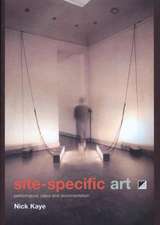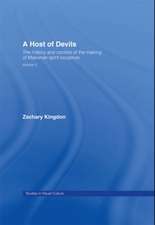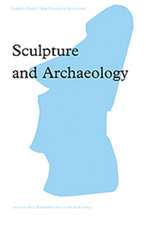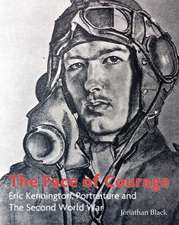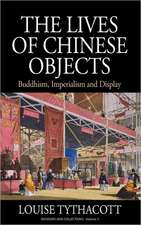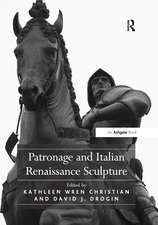Sculpting Doughboys: Memory, Gender, and Taste in America's World War I Memorials
Autor Jennifer Wingateen Limba Engleză Paperback – 14 oct 2024
| Toate formatele și edițiile | Preț | Express |
|---|---|---|
| Paperback (1) | 259.92 lei 6-8 săpt. | |
| Taylor & Francis – 14 oct 2024 | 259.92 lei 6-8 săpt. | |
| Hardback (1) | 1053.98 lei 6-8 săpt. | |
| Taylor & Francis – 5 iul 2013 | 1053.98 lei 6-8 săpt. |
Preț: 259.92 lei
Preț vechi: 311.39 lei
-17% Nou
Puncte Express: 390
Preț estimativ în valută:
49.78€ • 50.79$ • 41.88£
49.78€ • 50.79$ • 41.88£
Carte tipărită la comandă
Livrare economică 25 februarie-11 martie
Preluare comenzi: 021 569.72.76
Specificații
ISBN-13: 9781032925523
ISBN-10: 1032925523
Pagini: 244
Dimensiuni: 156 x 234 mm
Greutate: 0.45 kg
Ediția:1
Editura: Taylor & Francis
Colecția Routledge
Locul publicării:Oxford, United Kingdom
ISBN-10: 1032925523
Pagini: 244
Dimensiuni: 156 x 234 mm
Greutate: 0.45 kg
Ediția:1
Editura: Taylor & Francis
Colecția Routledge
Locul publicării:Oxford, United Kingdom
Public țintă
AcademicCuprins
Contents: Introduction; Fighting and vigilant doughboys; Art critics mobilize; Challenging the prevailing triumphant ideal; In pursuit of 'art' and anti-militarism: forfeiting the doughboy; Conclusion: living histories; Bibliography; Index.
Notă biografică
Jennifer Wingate is Assistant Professor of Fine Arts at St. Francis College, USA.
Recenzii
'Wingate's wide-ranging examination of World War I memorials reveals the unseen bureaucratic negotiation over style and content while simultaneously articulating how commemorative public art held contestable meanings for sculptors and viewers during the interwar years.'
- CAA Reviews
'As World War 1, the “Great War,” as it was once called, reaches the centennial mark for America’s involvement, Jennifer Wingate offers a deeply contextual look at how the United States chose to remember its war dead, often with sculpture, and what became of that work over the last eighty or more years—what monuments are still cared for and something of why they might still be with us today. The introduction does not shy away from the issues of race; a resurgent romantic nationalism in the 1920s; the ideal of the male warrior as northern European, coincident with the increase in immigration; and the fear of international communism.'
- H-War
'...consistently insightful and extremely well written - Jennifer Wingate's Sculpting Doughboys reminds us that war commemoration, in any form, is always political. This fine book will inspire its readers to pay more attention to public memorials that all too often hide in plain sight and to seek out the history, invariably filled with conflict and controversy, behind their creation.'
- Journal of Military History
'Sculpting Doughboys is part of a much larger body of scholarship on war monuments and memorialization - Wingate's volume adds to this impressive body of scholarship...'
- Panorama
'In laying groundwork for future study of this little-understood moment in American sculptural history, Wingate's Sculpting Doughboys will interest scholars of public monuments and popular culture investigating the ways in which objects of high and low art shape collective memory. As we approach the centennial of America's entrance into World War I and contemplate new memorials to the nation's armed forces, it is important to con-sider whether these memorial sites have retained or lost their potency as sites of commemoration.'
- Winterthur Portfolio
- CAA Reviews
'As World War 1, the “Great War,” as it was once called, reaches the centennial mark for America’s involvement, Jennifer Wingate offers a deeply contextual look at how the United States chose to remember its war dead, often with sculpture, and what became of that work over the last eighty or more years—what monuments are still cared for and something of why they might still be with us today. The introduction does not shy away from the issues of race; a resurgent romantic nationalism in the 1920s; the ideal of the male warrior as northern European, coincident with the increase in immigration; and the fear of international communism.'
- H-War
'...consistently insightful and extremely well written - Jennifer Wingate's Sculpting Doughboys reminds us that war commemoration, in any form, is always political. This fine book will inspire its readers to pay more attention to public memorials that all too often hide in plain sight and to seek out the history, invariably filled with conflict and controversy, behind their creation.'
- Journal of Military History
'Sculpting Doughboys is part of a much larger body of scholarship on war monuments and memorialization - Wingate's volume adds to this impressive body of scholarship...'
- Panorama
'In laying groundwork for future study of this little-understood moment in American sculptural history, Wingate's Sculpting Doughboys will interest scholars of public monuments and popular culture investigating the ways in which objects of high and low art shape collective memory. As we approach the centennial of America's entrance into World War I and contemplate new memorials to the nation's armed forces, it is important to con-sider whether these memorial sites have retained or lost their potency as sites of commemoration.'
- Winterthur Portfolio
Descriere
Redressing the neglect of World War I memorials in art history scholarship, this volume shows why sculptures of 'doughboys' (US soldiers during World War I) were in such demand during the 1920s, and how their functions and meanings have evolved. Jennifer Wingate recovers and interprets the circumstances of the doughboy sculptures' creation, and off

